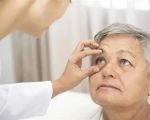
- understanding-office-eye-strain - Understanding Office Eye Strain
- why-office-workers-are-more-at-risk - Why Office Workers Are More at Risk
- how-to-prevent-eye-strain-in-office-environments - How to Prevent Eye Strain in Office Environments
- real-case-office-vision-fatigue-turnaround - Real Case: Office Vision Fatigue Turnaround
- long-term-habits-to-protect-your-vision - Long-Term Habits to Protect Your Vision
- visit-eye-docs-for-professional-eye-comfort-support - Visit Eye Docs for Professional Eye Comfort Support
1. Understanding Office Eye Strain
Many office workers suffer from persistent blurry vision, headaches, or dry eyes without realizing the culprit is eye strain. Technically known as "computer vision syndrome," this common condition stems from extended exposure to digital screens, artificial lighting, and poor ergonomics. Understanding this strain is the first step toward reducing it.
2. Why Office Workers Are More at Risk
Compared to other professions, office-based employees are particularly vulnerable to eye strain. The reason? Hours of uninterrupted screen time, harsh fluorescent lights, low humidity, and minimal blinking while concentrating. A study by the American Optometric Association found that more than 60% of office workers report frequent vision-related discomfort.
Many workers also work with poor monitor placement, improper font sizes, or outdated glasses prescriptions. This worsens the strain and often leads to compensatory behavior, like leaning forward or squinting, which contributes to neck and shoulder pain as well.
3. How to Prevent Eye Strain in Office Environments
Searching for effective strategies on how to prevent eye strain in office environments? It starts with small but deliberate adjustments:
Ergonomics: Your monitor should be an arm’s length away, with the top of the screen at or slightly below eye level. Lighting should reduce glare—avoid placing screens directly under or opposite bright light sources.
The 20-20-20 Rule: Every 20 minutes, look at something 20 feet away for at least 20 seconds. It gives your eye muscles a break and resets your focus.
Use Blue Light Filters: Install blue light reduction software or use computer glasses that filter out high-energy visible light. This simple tool can drastically reduce fatigue over time.
Artificial Tear Drops: Offices tend to be dry. Use preservative-free eye drops to combat dryness and keep your eyes lubricated throughout the day.
Font and Contrast Settings: Don’t underestimate the strain poor contrast causes. Use black text on a white background and ensure your screen brightness isn’t competing with surrounding light.
4. Real Case: Office Vision Fatigue Turnaround
Consider Jamie, a data analyst in Dallas who began suffering migraines and blurry vision by noon every day. She assumed she just needed more sleep—until her optometrist pointed out that her desk setup and lack of breaks were the real cause. With some adjustments—ergonomic chair, anti-glare screen protector, and a new habit of standing up every hour—her symptoms vanished within two weeks. Her case is a reminder: sometimes, solving health issues starts by just rethinking your desk.
5. Long-Term Habits to Protect Your Vision
While daily tactics matter, long-term habits are key to protecting your eyesight throughout your career:
- Regular Eye Exams: Annual checkups catch subtle changes in vision and ensure your glasses or contacts meet current needs.
- Healthy Diet: Omega-3 fatty acids, lutein, and vitamin A all contribute to long-term eye health.
- Stay Hydrated: Dehydration can affect tear production and worsen dry eye symptoms.
The earlier you develop these habits, the easier it is to maintain sharp, comfortable vision—even in demanding screen-centric jobs.
6. Visit Eye Docs for Professional Eye Comfort Support
Whether you’re a remote worker, coder, designer, or accountant, your eyes are your livelihood. At Eye Docs, we specialize in protecting visual comfort for digital professionals. From customized screen glasses to ergonomic consultation services, we’re here to help you stay productive without pain. If you’re constantly battling screen-induced fatigue, it’s time to take your eye care seriously—and we’ll walk you through every step.








